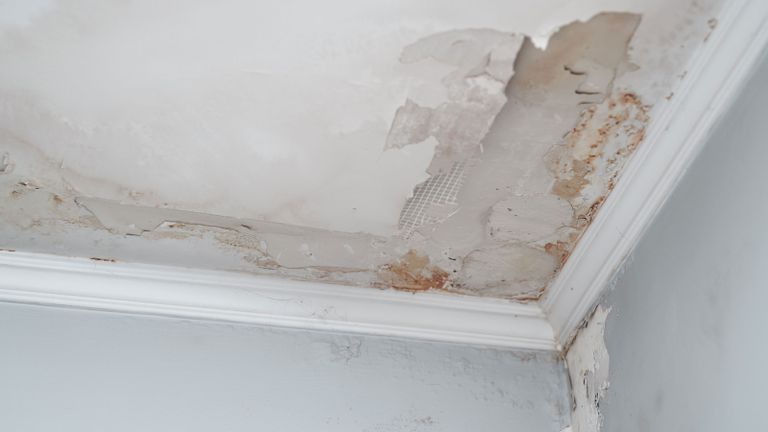6 Water Damage Remediation Do's as well as Don'ts.
6 Water Damage Remediation Do's as well as Don'ts.
Blog Article
Are you currently on the lookout for insight around 5 Home Safety Tips To Reduce The Risk Of Fire And Water Damage?

Though water offers life, water intrusion on parts where it's not meant to be can cause damage. If the water saturates into your structure, it can peel away surfaces as well as deteriorate the structure. Mold and mold additionally flourish in a moist atmosphere, which can be unsafe for your wellness. Residences with water damage smell moldy and also old.
Water can come from numerous resources such as hurricanes, floods, burst pipes, leakages, and also drain issues. In case you experience water damage, it would be good to recognize some safety and security preventative measures. Right here are a few guidelines on how to manage water damages.
Do Prioritize Residence Insurance Policy Protection
Water damage from flooding as a result of heavy winds is seasonal. You can additionally experience an unexpected flooding when a malfunctioning pipe suddenly breaks into your home. It would certainly be best to have home insurance policy that covers both disasters such as natural tragedies, as well as emergencies like broken plumbing.
Do Not Forget to Switch Off Utilities
In the event of a catastrophe, especially if you stay in a flood-prone area, it would certainly be recommended to switch off the primary electric circuit. This cuts off power to your entire house, protecting against electrical shocks when water can be found in as it is a conductor. Furthermore, do not forget to shut off the main water line shutoff. When floodwaters are high, furniture will certainly move around as well as trigger damage. Having the main valve shut down avoids more damages.
Do Keep Proactive and also Heed Climate Notifies
Storm floodings can be really unforeseeable. If there is a background of flooding in your neighborhood, stay positive and also ready. If you live near a lake, river, or creek , listen to discharge cautions. Obtain valuables from the ground floor as well as basement, then put them on the highest possible level. Doing so reduces potential residential property damage.
Don't Neglect the Roof
You can prevent rain damages if there are no holes as well as leaks in your roofing. This will avoid water from moving down your walls and also soaking your ceiling.
Do Take Notice Of Small Leaks
A burst pipe doesn't occur over night. You might discover bubbling paint, peeling wallpaper, water streaks, water spots, or trickling audios behind the wall surfaces. Have your plumbing repaired prior to it results in substantial damages.
Do Not Panic in Case of a Ruptured Pipeline
Keeping your presence of mind is vital in a time of dilemma. Due to the fact that it will suppress you from acting quick, stressing will just intensify the issue. Timing is key when it comes to water damages. The longer you wait, the more damages you can anticipate. Thus, if a pipeline bursts in your residence, immediately turned off your main water shutoff to cut off the source. Unplug all electrical outlets in the area or turn off the circuit breaker for that part of the house. Call a credible water damages restoration professional for aid.
Water offers life, water invasion on parts where it's not intended to be can result in damages. Houses with water damage scent stuffy and also old.
Water damage from flooding fees to heavy winds is seasonal. You may see gurgling paint, peeling wallpaper, water touches, water spots, or leaking sounds behind the walls. When it comes to water damages, timing is crucial.
Some Do's & Don't When Dealing with a Water Damage
DO:
Make sure the water source has been eliminated. Contact a plumber if needed. Turn off circuit breakers supplying electricity to wet areas and unplug any electronics that are on wet carpet or surfaces Remove small furniture items Remove as much excess water as possible by mopping or blotting; Use WHITE towels to blot wet carpeting Wipe water from wooden furniture after removing anything on it Remove and prop up wet upholstery cushions for even drying (check for any bleeding) Pin up curtains or furniture skirts if needed Place aluminum foil, saucers or wood blocks between furniture legs and wet carpet Turn on air conditioning for maximum drying in winter and open windows in the summer Open any drawers and cabinets affected for complete drying but do not force them open Remove any valuable art objects or paintings to a safe, dry place Open any suitcases or luggage that may have been affected to dry, preferably in sunlight Hang any fur or leather goods to dry at room temperature Punch small holes in sagging ceilings to relieve trapped water (don't forget to place pans beneath!); however, if the ceiling is sagging extremely low, stay out of the room and we'll take care of it DO NOT:
Leave wet fabrics in place; dry them as soon as possible Leave books, magazines or any other colored items on wet carpets or floor Use your household vacuum to remove water Use TV's or other electronics/appliances while standing on wet carpets or floors; especially not on wet concrete floors Turn on ceiling fixtures if the ceiling is wet Turn your heat up, unless instructed otherwise

Hopefully you liked our excerpt on What You Can Do At Home To Prevent Fire And Water Damage. Thank you for finding the time to read our piece. You should take a moment to promote this write-up if you enjoyed reading it. Thanks for going through it.
Report this page